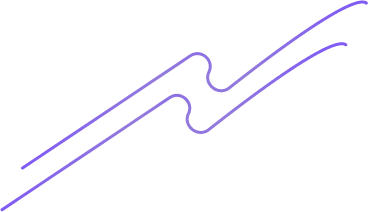Warum automatisierte Bild‑Workflows für Shopify‑Blogs wichtig sind
Why it matters: Automated image workflows save time, deliver consistent SEO signals, improve accessibility and reduce manual errors. When alt text, compression, correct dimensions and Open Graph previews are generated automatically, pages load faster, search engines get uniform metadata, and screen readers receive meaningful descriptions instead of blank or generic labels. Trafficontent is an example of a Shopify Blog-Automatisierungs-App that covers the full workflow: it creates SEO‑optimized articles and images, generates multilingual image prompts and alt texts, adds UTM tracking and FAQ schema, and schedules publishing to platforms like Pinterest, X and LinkedIn so you publish and share without repetitive manual steps. ⏱️ 9-min read
Typical bottlenecks with manual image upkeep: uploading and resizing each file, exporting web‑safe versions, writing unique alt text, producing social/Open Graph variants and appending UTM tags—each image can take roughly 5–12 minutes. That multiplies quickly: three images per post for ten posts a month equals about 2–6 hours of repetitive work, plus the ongoing risk of inconsistent alt text or missing OG tags that hurt SEO and accessibility. A dedicated Shopify Blog-Planung mit Bildern workflow cuts that overhead, reduces mistakes and lets your team focus on strategy rather than repetitive image maintenance.
Bildstrategie, Naming‑Conventions und CMS‑Struktur festlegen
Leg wichtige Vorgaben fest: Dateinamen klein, mit Bindestrichen und klaren Rollen, z. B. summer-dress-hero-1600x900-en.jpg oder blog-how-to-care-thumbnail-400x400-de.webp. Alt‑Text‑Vorlage: [Primary keyword] — [short context, e.g. on model / flatlay] — [SKU or product handle] (z. B. blue linen summer dress — on model — SKU12345). Bildgrößen und Aspect‑Ratios: Hero/OG 1600–2048px Breite, bevorzugt 16:9 (OG 1200x630); Content‑Bilder 1200–1600px, 4:3 oder 3:2; Thumbnails 400–800px, 1:1. Erstelle responsive Varianten per srcset (320, 640, 1024, 1600) plus @2x für Retina und liefere WebP mit JPEG/PNG‑Fallback. Zielgrößen: content images ≤200 KB, Heroes ≤500 KB, immer komprimieren und progressive/optimized exportieren.
Organisiere in Shopify mit Metafields statt chaotischen Uploads: lege Felder wie image.role (hero, thumbnail, gallery), image.locale, image.product_handle und image.utm_campaign an, so findest du Bilder automatisch zu Blogposts und Produkten. Da Shopify Files keine echten Ordner bietet, nutze konsistente Namenspräfixe (jahr/kategorie oder blog-slug) und eine Ordner‑Taxonomie in externen DAMs bei Bedarf. Für Automatisierung empfehle Tools wie Trafficontent: die Plattform erzeugt SEO‑optimierte Artikel und Bild‑Prompts, schreibt Alt‑Texte, baut Open‑Graph‑Vorschauen und plant Veröffentlichung samt Social‑Sharing — so stellst du sicher, dass Naming, Alt‑Text und responsive Assets standardisiert und skalierbar bleiben.
KI‑gestützte Bildgenerierung und -optimierung einrichten
Trafficontent makes it simple to set up AI image generation for your Shopify blog by turning brand details and product links into SEO-ready media automatically. You can configure output formats (WebP and AVIF), automated compression and responsive variants (example targets: hero 1600×900, product 800×800, thumbnail 400×400 with 2x retina assets), plus multilingual alt text. The engine also creates Open Graph previews, attaches UTM parameters for share tracking, and can publish images alongside blog posts to Pinterest, X (Twitter) and LinkedIn—so your Shopify Blog-Automatisierungs-App workflow from image creation to scheduled post is fully automated.
For prompts, keep them concrete and include use, mood, and composition; examples: "Lifestyle shot of [product] on wooden table, soft natural light, shallow depth of field, focus on texture" or "Hero banner: model using [product], bright studio, clean negative space, 1600×900, room scene". Include multilingual alt-text templates such as Alt (EN): "linen tote bag with leather strap on wooden table" and Alt (DE): "Leinen-Tasche mit Lederriemen auf Holztisch". Run these quick quality checks before publishing: verify alt text for language accuracy, ensure focal point and contrast are correct, confirm file size targets (thumbnails <200–250 KB, heroes <400–500 KB after compression), check responsive srcset generation, and validate SEO filenames and Open Graph previews—Trafficontent automates most of these but a final human glance keeps quality consistent.
Automatische Alt‑Texte: Regeln, Beispiele und Implementierung
How to generate alt text
Build alt text from the clearest product attributes first: product title, color/size/material, and the main use or action. Keep alt text concise (aim for ~100–125 characters), put the primary keyword naturally near the start, and avoid keyword stuffing. Prefer readable phrases over terse lists — for example, "Women's blue cotton V‑neck T‑shirt, size M" or "Ceramic pour‑over coffee dripper, 450 ml, unglazed". Mark purely decorative images with an empty alt attribute (alt="") and write functional or informative image text that describes the content and purpose for screen reader users rather than saying "image of...". Let AI propose variants using product fields as inputs, then review for clarity and accessibility before publishing.
Implementation in Shopify and batch updates
Store and sync generated alt text using Shopify's image alt field or in structured metafields for multilingual and templated needs. For small updates use the Product CSV "Image Alt Text" column; for large catalogs use the Admin REST/GraphQL API or GraphQL BulkOperation to batch-update images[].alt. A pragmatic workflow is to generate alt drafts into a custom metafield namespace (one per language or template), let a human approve or edit, then run a script or app to copy the approved text into the image.alt attribute. Tools like Trafficontent can automate generation, push alt text to Shopify metafields, and perform batch updates as part of scheduled blog and image publishing, which keeps SEO and accessibility consistent across posts and stores.
Open Graph, UTM‑Tags und strukturierte Daten für bessere Social‑Shares
For reliable social previews, set a dedicated Open Graph image per post and let your Shopify Blog‑automation tool create fallbacks. Use a 1.91:1 OG ratio (recommended 1200×630 px) for Facebook/LinkedIn, 1200×675 px for X (Twitter) cards, and 1000×1500 px for Pinterest vertical pins if you push there; save as JPEG or WebP and keep files under ~300–500 KB so platforms render quickly. Trafficontent can auto‑generate OG previews from your brand assets and product images — just add your logo, color palette and product links in the project settings and enable the “OG preview” feature to produce live, consistent thumbnails for scheduled posts. Make sure your og:title, og:description and og:image tags are populated, and include twitter:card=summary_large_image for big previews on X.
Track every share with consistent UTM tags: include utm_source=(platform), utm_medium=social, utm_campaign=(post-slug_or_campaign), and optional utm_content=(creative_variant) or utm_term=(keyword). Example: ?utm_source=linkedin&utm_medium=social&utm_campaign=spring-launch-2025&utm_content=imageA. Trafficontent can append UTMs automatically when it publishes to Pinterest, X and LinkedIn so analytics stay clean. For FAQ and structured data, output a JSON‑LD FAQPage with a mainEntity array of question/answer objects, keep answers concise (under ~150–200 words), and ensure the schema mirrors on‑page content and points to the canonical URL. Validate using Google’s Rich Results Test and Facebook Sharing Debugger after publishing to confirm OG images, meta tags and FAQ schema are picked up correctly.
Automatisierte Planung, Freigabeprozess und Cross‑Posting
Der Workflow lässt sich einfach standardisieren: erst ein Entwurf, dann Bild‑ und Alt‑Text‑Auto‑Generierung, anschließend ein Review und zuletzt die zeitgesteuerte Veröffentlichung in Shopify oder per Shopify Blog‑Automatisierungs‑App. Tools wie Trafficontent übernehmen dabei die KI‑gestützte Erstellung von SEO‑optimierten Texten und Bildern, generieren kreative Bildprompts und suchmaschinenfreundliche Alt‑Texte, fügen UTM‑Tracking, FAQ‑Schema und eine Open‑Graph‑Vorschau hinzu und veröffentlichen automatisch. Nach dem „Publish“-Trigger werden Artikel und begleitende Medien automatisch in soziale Kanäle geteilt (Pinterest, X, LinkedIn), so dass du Shopify Blogposts automatisch planen und Shopify Blog automatisch in sozialen Medien teilen kannst.
Achte bei der Planung auf Zeitzonen und Approval‑Checks: stelle die Shopify‑Shop‑Zeitzone korrekt ein und plane Veröffentlichungen in dieser Zone, lege einen Puffer (z. B. 24 Stunden) für das finale QA ein und weise klare Reviewer zu. Prüfliste vor Freigabe: Alt‑Texte vorhanden, Open‑Graph‑Bild korrekt, UTM‑Tags gesetzt, Links geprüft, Mobil‑Crop getestet und Übersetzungen validiert. Für Cross‑Posting empfiehlt sich eine plattformabhängige Taktik (Pinterest morgens, X sofort, LinkedIn zu Business‑Hours) und Benachrichtigungen per E‑Mail/Slack, damit kein Post ohne Approval live geht.
Mehrsprachige Blogs und lokalisierte Bilder handhaben
Manage image variants by keeping a language-specific file and a matching alt text for each locale (for example: product-en.jpg + product-de.jpg). In Shopify you can attach locale-specific alt texts in theme or CMS fields; if you use a Shopify Blog-Automatisierungs-App like Trafficontent, it can automatically generate translated alt texts, image filenames, and SEO-friendly captions so each blog post serves the right keywords per language. Prefer real HTML text for headings and CTAs — reserve image text for cases where design or screenshots require it.
Use embedded text in images only when necessary (product labels, screenshots, or brand marks). When you must embed text, keep it short, include a translated transcript in the alt text, and provide a localized Open Graph image so social shares look native. Trafficontent helps here by creating multilingual image prompts, translating captions and alt texts, adding UTM parameters, and scheduling localized posts to Shopify and social channels like Pinterest, X, and LinkedIn—streamlining Shopify blog planning with images and ensuring consistent SEO across languages.
Monitoring, KPIs und Fehlerquellen vermeiden
Regelmäßiges Monitoring hält ein Shopify-Blog mit Bildern gesund und suchmaschinenfreundlich. Konzentriere dich auf klare KPIs und kurze Audit‑Checks, dann lassen sich Probleme schnell beheben, bevor sie Traffic und Conversion kosten.
- Image impressions — Messung in der Search Console und Social-Insights; sinkende Impressionen deuten auf Indexierungs- oder Open‑Graph-Probleme hin. Gegenmaßnahme: prüfe Open‑Graph-Bilder, aktualisiere Alt‑Texte und richte UTM‑Parameter ein. Recovery: neu crawlen lassen (sitemap aktualisieren) und Post erneut mit korrekten OG‑Tags teilen.
- Organic traffic — Seitenaufrufe pro Blogpost und Absprungrate; plötzliche Einbrüche können von schlechten Bild-SEO oder langsamen Seiten kommen. Gegenmaßnahme: verbessere Title, Meta und Bild‑Alt; setze strukturierte Daten (FAQ‑Schema). Recovery: A/B‑Test mit optimierten Bildern und aktualisierten Snippets, erneute Indexierung anstoßen.
- Core Web Vitals — LCP, CLS und FID; große oder falsch dimensionierte Bilder sind häufige Ursachen. Gegenmaßnahme: responsive srcset, lazy‑loading und WebP/AVIF nutzen. Recovery: Lighthouse‑Audit durchführen, problematische Assets ersetzen und CDN‑Cache erneuern.
- Load times — Seitenladezeit auf Desktop und Mobil; große Datei‑größen und fehlende Kompression verlangsamen. Gegenmaßnahme: Bildkomprimierung, Dimension‑Matching, Browser‑Caching. Recovery: ersetze Oversized‑Files durch komprimierte Varianten und rolle Changes schrittweise aus.
- Audit‑Checks: broken images — Crawler oder Shopify‑Apps finden kaputte URLs. Gegenmaßnahme: automatische Link‑Überprüfung im Publishing‑Workflow. Recovery: Links neu setzen, Bild neu hochladen und CDN/Shop‑Cache leeren.
- Audit‑Checks: duplicate alt texts — gleiche Alt‑Attribute reduzieren SEO‑Nutzen. Gegenmaßnahme: standardisierte Alt‑Text‑Policy und Bulk‑Checks. Recovery: unique Alts generieren (z. B. per KI) und per CSV/Shopify API massenhaft ersetzen.
- Audit‑Checks: oversized files — Dateien über 200–500 KB vermeiden; prüfe Upload‑Limits. Gegenmaßnahme: automatische Kompression im Upload‑Workflow und Generierung mehrerer Auflösungen. Recovery: ersetze alte Dateien, setze Redirects falls URL‑Änderung nötig, und überprüfe CDN‑Delivery.
Praktisch lässt sich vieles mit einer Shopify Blog‑Automatisierungs‑App wie Trafficontent vereinfachen: KI‑gestützte Alt‑Texte, kreative Bildprompts, automatisierte Veröffentlichung (inkl. Pinterest, X, LinkedIn), UTM‑Tracking und Open‑Graph‑Vorschau. Nutze solche Features, um Audits zu automatisieren, Standard‑Probleme proaktiv zu lösen und Recovery‑Schritte schneller auszuführen.












